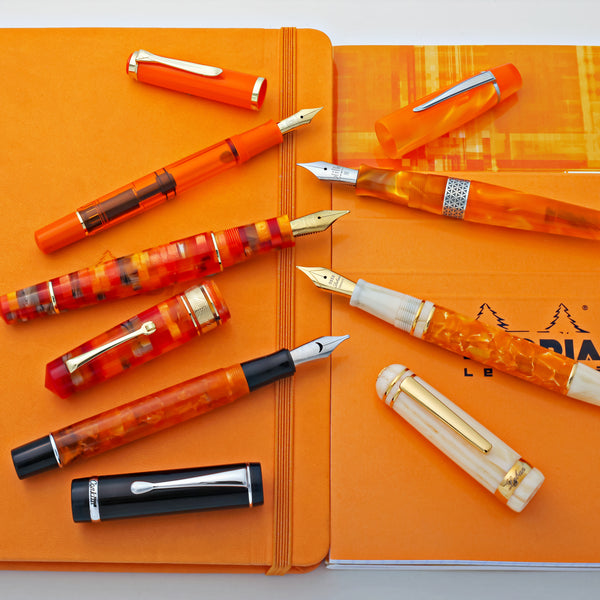How to Improve Your Handwriting With Fountain Pens
#1 Fountain Pen Writing Techniques
If you are going to take one tip away from this article, it should be the following: S-L-O-W D-O-W-N!! Seriously, how do people expect to do anything well if they're always in a big rush?
Sit in a comfortable chair with your back straight, feet on the ground in a relaxed posture. Not slouching-relaxed, just loose. You want the writing area to be in front of you at an angle that is comfortable for your arm. Lefties will have to angle their paper at an angle that works for their writing style. You want to be in a position where you can move your writing hand, arm, and elbow freely.
Keep your posture upright to prevent hunching over or straining across the table. Your physical comfort level is reflected in the quality of your writing.
Grip the writing instrument lightly with your thumb and middle finger acting as support. The index (or forefinger) is doing most of the work in writing. Keep your wrist, arm, and elbow loose, moving along from word-to-word as you go across the page.
Consistency is key in beautiful handwriting. Our eye is attracted to shapes that are symmetrical, aligned, and spaced evenly. Sloppy handwriting is hard to understand because it deviates from how we expect letters to look.
To improve clarity, keep all your letters grounded on the baseline. Make sure that ascenders rise to the same height while the descenders drop to the same level. Capital letters should be the same size as other capital letters and lowercase should be the same size as other lowercase letters. The spacing between letters is just as important to keep uniform. The exact height and spacing are dependent on your nib size and personal writing style.
The best way to develop your personal style is first by imitation. Handwriting templates and practice sheets are a great place to start. You can find printable templates online, take out a calligraphy book at the library or buy a workbook like one from Brause.
For more inspiration, look at Instagram for calligraphers, bullet journalers, planner addicts and studygrammers. The advantage to watching video is seeing the movement of the writer as they put pen to paper. Being part of this community exposes you to new techniques, tools, and styles.
Here are a few noteworthy fountain pen instagram accounts to follow, in no particular order:



